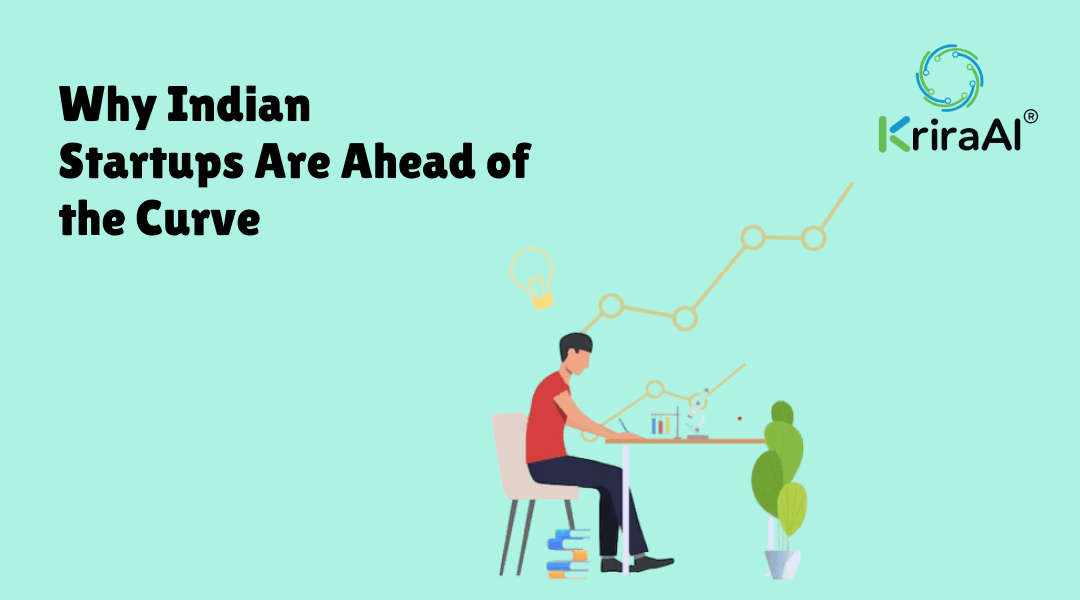Why Indian startups are choosing custom AI development
A founder I once worked with burned through ₹35 lakhs on an AI chatbot that couldn’t answer a single customer query correctly. It was supposed to “revolutionize support.” Instead, it became a meme in their Slack channel.
The worst part? The solution wasn’t wrong. It just wasn’t theirs.
They bought a boxed, off-the-shelf AI service and expected it to magically understand their business. It didn’t. It never could.
What they needed—and what we later built together—was a custom AI model trained on their unique customer behavior and domain data. Within weeks, their CSAT scores jumped. And the Slack memes? They turned into customer testimonials.
I’ll explain what changed. But first—why is this story becoming so common in India’s startup scene?
If you're building a startup in India right now, there's a decent chance someone on your team has said, "Should we add AI to this?"
The pressure is real. Investors ask. Competitors boast. LinkedIn is full of "AI-powered" everything.
But here's the hard truth most startups miss: generic AI tools are built for generic problems. And most startups don’t have generic problems. You have messy, context-specific, “no-platform-has-solved-this-yet” kind of problems.
That’s exactly where custom AI development becomes not just relevant—but often essential.
Custom AI Isn’t a Luxury. It’s a Survival Strategy.
Off-the-shelf tools make sense—for things like calendar bookings or image resizing. Not for core decisions that define your customer experience or operational efficiency.
If your AI needs to...
Understand your regional language nuances,
Prioritize high-value leads based on your quirky sales cycles,
Flag fraudulent behavior your payment gateway can’t see,
...then generic AI won’t cut it.
Startups like yours are realizing this. And they’re choosing custom AI not because it's fancy—but because it's the only thing that works.
But… Isn’t Custom AI Expensive?
Yes. And no.
Let me be brutally honest here. If you just want a “fun AI feature” to impress investors, custom AI will be overkill. It’s not cheap. It requires strategy, data prep, dev cycles, and iteration.
But if you're solving a bottleneck that’s bleeding revenue or blocking scale?
Custom AI is often cheaper than continuing to patch things with manual labor or a Frankenstein stack of SaaS tools.
Here’s a practical example.
The “Return Rate Reducer” Case (D2C Startup, Mumbai, 2023)
One D2C brand selling apparel came to us frustrated: 28% return rate. Generic recommendation engines weren’t working. We built a lightweight custom vision model that analyzed UGC images to predict fabric preference patterns by city and climate.
Return rate dropped to 11% in 45 days. Cost of project: under ₹10 lakhs. Savings in logistics alone: ₹26 lakhs in the first quarter.
Tell me again—what’s expensive?
Simple version:
Custom AI is like a personal chef. Off-the-shelf AI is fast food. One fills you up. The other transforms your health.
Now, the techier version:
Custom AI development involves building or fine-tuning machine learning models based on your domain-specific data. Instead of relying on general training datasets, it uses your customer behaviors, operational patterns, and business rules—giving you higher accuracy, contextual relevance, and strategic control.
The Hard Truth: When Custom AI Is a Terrible Idea
Let’s not kid ourselves. Custom AI is not for everyone.
If you don’t have:
Clean, consistent data (or at least the willingness to get it),
A core business problem that AI can measurably impact,
Team buy-in for a long-term solution,
...then please don’t build custom AI. It’ll drain your time and money faster than a marketing intern with access to Meta Ads.
Start with smaller automations. Validate the problem. And then consider a custom approach.
Why Indian Startups Are Ahead of the Curve

You’d think Silicon Valley would be leading here. But Indian startups have a unique edge:
Frugality: They’re more disciplined with capital, so they avoid bloated SaaS subscriptions.
Market Complexity: Indian users span dozens of languages, cultural habits, and devices. Generic AI fails here—fast.
Talent Access: India has an abundance of ML engineers and AI dev shops (like ours) who understand local challenges and can build lean, targeted solutions.
Custom AI isn’t the future. It’s already happening. Quietly. Efficiently. In co-working spaces across Bangalore, Gurgaon, Pune.
Conclusion
Here’s the thing.
Custom AI isn’t the shiny object anymore. It’s the plumbing. Quiet. Essential. Invisible when it works well.
If you’re a startup founder in India, your problems are too unique, too complex, and too nuanced to be solved by cookie-cutter solutions from some SaaS brochure.
That’s not a bad thing. That’s your moat.
The goal here isn’t to sell you anything. It’s to save you from a very expensive, very public AI failure.
If this resonated, the next logical step isn’t a demo. It’s reading our case study on how we helped a SaaS client cut churn by 42% using a model trained on their user data—not a global average.
Let’s build something real.
FAQs
It varies, but most MVP-level projects range from ₹4–12 lakhs depending on complexity, scope, and data availability.
If AI directly improves your core operations or user experience—yes. Otherwise, it might be better to wait until you have product-market fit.
Thinking AI will fix a broken process. AI scales clarity—not confusion. Fix the process first, then add intelligence.
For most Indian startups, outsourcing to a trusted AI development partner is faster and more cost-effective—especially in the early stages. It allows you to validate ideas without the long-term costs of hiring and training an internal team.
Typically, an MVP can take 6–12 weeks depending on the complexity, tech stack, and data readiness. Production-ready solutions may take longer if integration, testing, or compliance is involved.

CEO
